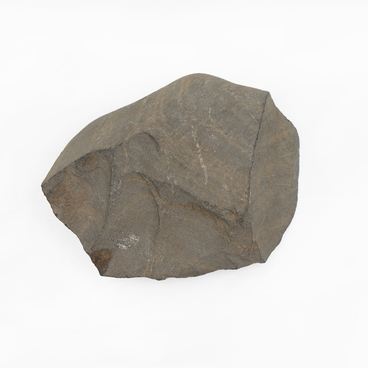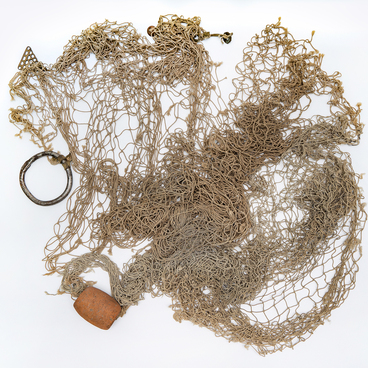The ritual spoon from the museum’s collection was made in 1928. It was intended for stirring and removing fat when it was boiled in a cast-iron cauldron during the “bear festival”. The craftsman sharpened the tip of the spoon’s main part, and cut five grooves on the inside of the bowl. The creator of the object decorated the upper part of the handle with a carved interlaced pattern. There is a neck thickening in the lower part of the handle. The craftsman decorated the handle with carvings in the form of spirals and intertwined lines.
The “bear festival”, during which the ritual spoon uiken (also called “uike”, “utke”, “yuken”, “yukale”) was used, was a striking element of the bear cult. The holiday consisted of ritual ceremonies related to the cooking of meat, the burial of bones and skulls. The culmination was the “seeing the beast” who “came to visit” the Nanai people “off to the forest”.
The rituals were based on the idea of the bear as a sacred ancestor, the master of the taiga. According to representatives of the indigenous Far Eastern people, the bear was their sacred relative, the first ancestor. Due to its external resemblance to man, as well as its natural intelligence, cunning and strength, the bear has been equated with a deity since ancient times. In order to once again strengthen family relations with such a powerful creature, as well as increase the number of bears in the hunting areas of the clan, people organized a celebration.
A variety of dishes were made of wood for eating at the bear festival. At other times, the ritual dishes were kept in special barns. They were especially carefully finished and decorated, had an ancient shape and ornaments.
Spoons occupied a special place in the art of wooden carving of the Amur peoples. The craftsmen carved them from linden, larch or bird cherry wood planks. The traditional feature of such objects was a flat shape with a sharp end, a long neck and a thickened part of the handle.
Wooden spoons were used
all the time, but they were suitable only for solid food and porridge. Liquid
food was sipped from cups. The ritual spoons for the “bear festival” were
especially carefully finished. Some of them were made of considerable size so
as not to spill the sacred bear fat when it was scooped from the cauldron.





